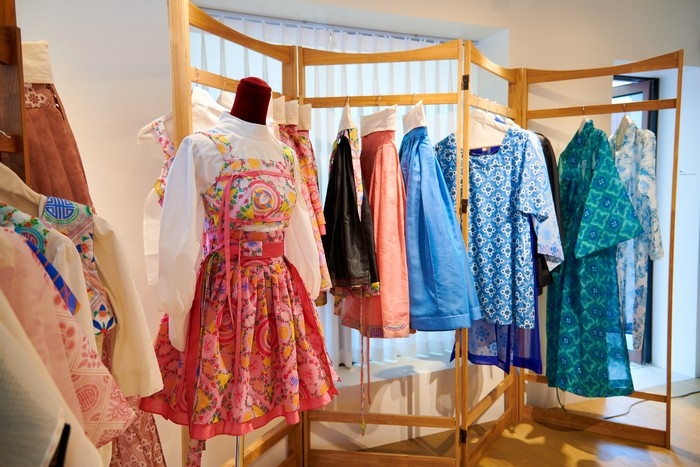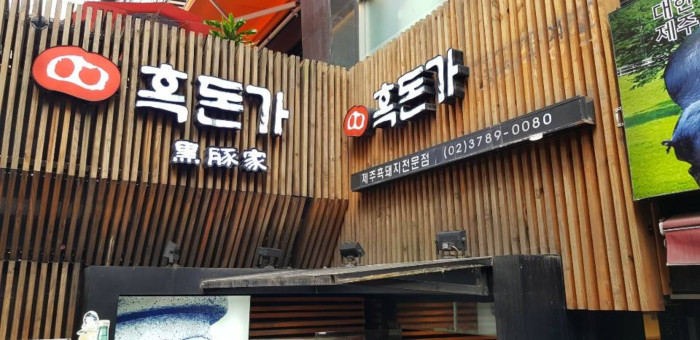Piaget - Lotte Avenuel Branch [Tax Refund Shop] (피아제 롯데 에비뉴엘점)
1.1Km 2024-04-18
73, Namdaemun-ro, Jung-gu, Seoul
-
IWC - Lotte Avenuel Branch [Tax Refund Shop] (아이더블유씨 롯데에비뉴엘점)
1.1Km 2024-04-18
2F, 73, Namdaemun-ro, Jung-gu, Seoul
-
Vacheron Constantin - Lotte Avenuel Branch [Tax Refund Shop] (바쉐론콘스탄틴 롯데 에비뉴엘점)
1.1Km 2024-04-23
73, Namdaemun-ro, Jung-gu, Seoul
-
Chopard - Lotte Avenuel Branch [Tax Refund Shop] (쇼파드 롯데 에비뉴엘)
1.1Km 2024-04-18
2F, 73, Namdaemun-ro, Jung-gu, Seoul
-
Panerai - Lotte Avenuel Branch [Tax Refund Shop] (파네라이 롯데 에비뉴엘점)
1.1Km 2024-04-18
2F, 73, Namdaemun-ro, Jung-gu, Seoul
-
Chaumet - Lotte Avenuel Branch [Tax Refund Shop] (쇼메 롯데에비뉴엘점)
1.1Km 2024-04-23
3F, 73, Namdaemun-ro, Jung-gu, Seoul
-
MyungBo Inc - Lotte Avenuel Branch [Tax Refund Shop] (명보아이앤씨 에비뉴엘)
1.1Km 2024-06-27
73, Namdaemun-ro, Jung-gu, Seoul
-
Danha(단하)
1.1Km 2025-11-05
39-7 Palpan-gil, Jongno-gu, Seoul
BLACKPINK's “HOW YOU LIKE THAT” music video created a sensation, reaching 100 million views within 32 hours of its release. The most noteworthy part of the music video was the hanbok they wore. Danha, which was in charge of making the costumes, improved the traditional hanbok and completely recreated it as a stage costume, garnering attention from all over the world. Danha is famous for designing hanboks using traditional patterns. The patterns engraved on the clothes in the BLACKPINK music video used the phoenix design pattern of the royal cloth. Danha's hanbok can be purchased through the online shop, and if you want to have it custom-made, you can visit Danha Maison after making a reservation.
Heukdonga Myeongdong (흑돈가 명동)
1.1Km 2024-03-07
21, Myeongdong, 7-gil, Jung-gu, Seoul
+82-2-3789-0080
Situated in Myeongdong, Heukdonga focuses on Jeju-style grilled black pork. Once black pork cut into thick chunks are grilled over charcoal, it is ready to be served with salted anchovies or pickled perilla leaves. The meat is grilled on a wire mesh over charcoal, which renders the fat and gives it a nice charcoal flavor. After finishing the meat, patrons have the option to soybean paste jjigae with rice or cold buckwheat noodles, which are also a must-try in Korean barbecue restaurants.
![Piaget - Lotte Avenuel Branch [Tax Refund Shop] (피아제 롯데 에비뉴엘점)](http://tong.visitkorea.or.kr/cms/resource/72/2889872_image2_1.jpg)
![IWC - Lotte Avenuel Branch [Tax Refund Shop] (아이더블유씨 롯데에비뉴엘점)](http://tong.visitkorea.or.kr/cms/resource/31/2889931_image2_1.jpg)
![Vacheron Constantin - Lotte Avenuel Branch [Tax Refund Shop] (바쉐론콘스탄틴 롯데 에비뉴엘점)](http://tong.visitkorea.or.kr/cms/resource/01/2890101_image2_1.jpg)
![Chopard - Lotte Avenuel Branch [Tax Refund Shop] (쇼파드 롯데 에비뉴엘)](http://tong.visitkorea.or.kr/cms/resource/10/2890310_image2_1.jpg)
![Panerai - Lotte Avenuel Branch [Tax Refund Shop] (파네라이 롯데 에비뉴엘점)](http://tong.visitkorea.or.kr/cms/resource/42/2890442_image2_1.jpg)
![Chaumet - Lotte Avenuel Branch [Tax Refund Shop] (쇼메 롯데에비뉴엘점)](http://tong.visitkorea.or.kr/cms/resource/65/2890465_image2_1.jpg)
![MyungBo Inc - Lotte Avenuel Branch [Tax Refund Shop] (명보아이앤씨 에비뉴엘)](http://tong.visitkorea.or.kr/cms/resource/62/3314562_image2_1.jpg)



 English
English
 한국어
한국어 日本語
日本語 中文(简体)
中文(简体) Deutsch
Deutsch Français
Français Español
Español Русский
Русский